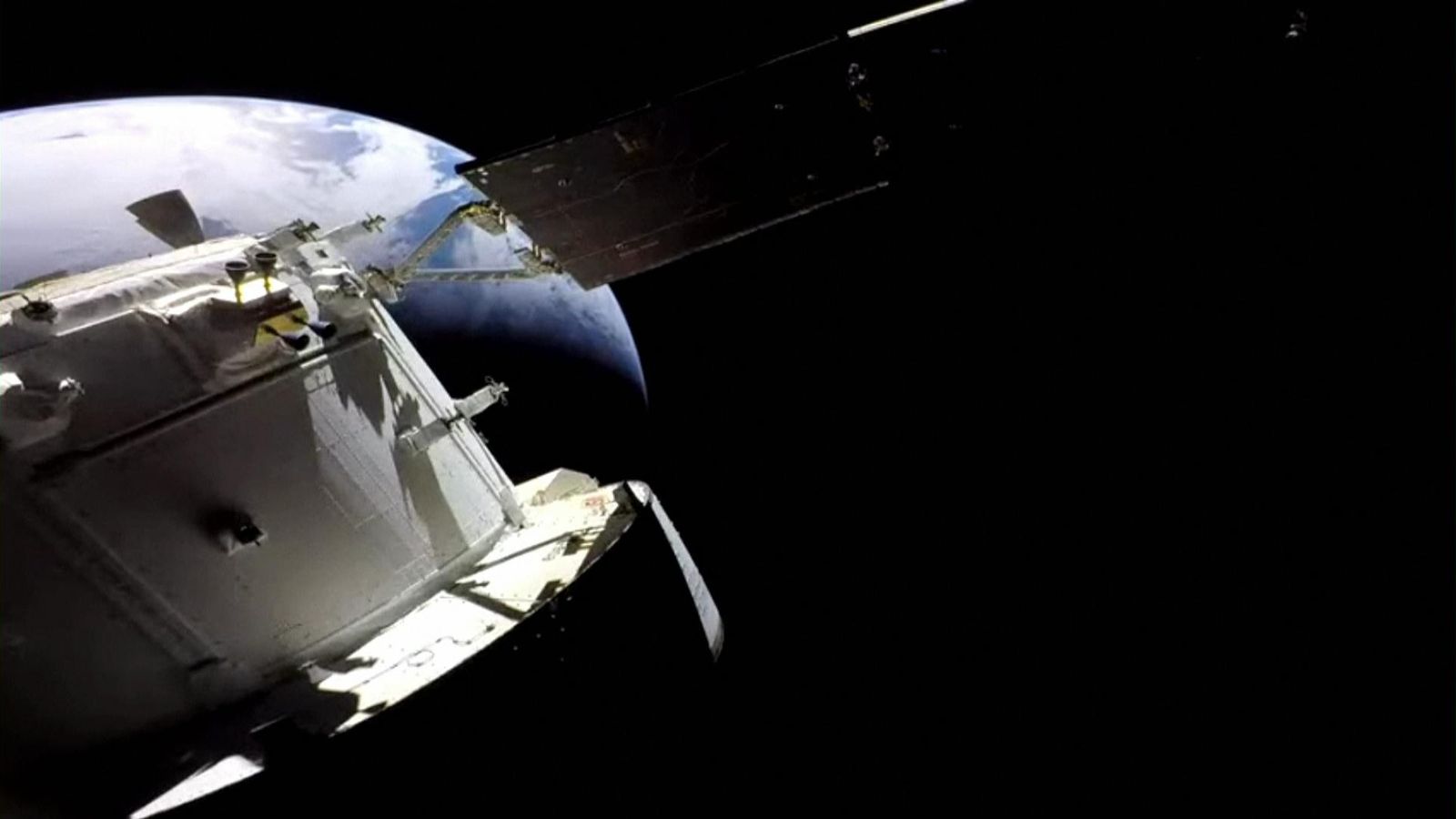NASA's Orion spacecraft splashes back down to Earth after successful moon mission
The splashdown was the final hurdle in what has been a successful mission. Now, the craft could take humans to the moon for its next mission - slated for 2024.

NASA's Orion spacecraft has successfully splashed down into the Pacific Ocean after a 25-day mission around the moon.
The uncrewed capsule - designed to carry astronauts on future trips - landed near Guadalupe Island, southeast of Cuba, shortly after 5.40pm UK time.
The spacecraft hurtled towards Earth at 25,000mph, slowing to around 325mph after entering the atmosphere, before deploying 11 parachutes and dropping to less than 20mph.
It had blasted off from Earth on 16 November on NASA's Space Launch System (SLS) rocket as part of the Artemis-1 mission (successor to the Apollo programme), ushering in a new era of lunar exploration in which humans could perhaps return to the moon.
Nine days later, it made history by travelling 270,000 miles beyond Earth - the furthest any spacecraft designed to carry humans has gone.
It has now notched up more than 1.4 million miles.
It was 50 years on Sunday since astronauts last landed on the moon. After touching down on 11 December 1972, Apollo 17's Eugene Cernan and Harrison Schmitt spent three days exploring the valley of Taurus-Littrow.
Orion was the first capsule to visit the moon since then.
There may have been no humans on this mission, but returning from the long-haul journey are woolly spacefarers Snoopy and Shaun the Sheep, alongside three mannequin astronauts - dubbed Commander Moonikin Campos, Helga, and Zohar, which were rigged with vibration sensors and radiation monitors.
Recovery teams will pull the capsule from the ocean.
NASA Administrator Bill Nelson said he was "overwhelmed", adding: "This is an extraordinary day. It's historic because we are now going back into space - deep space - with a new generation."
While the Artemis-1 mission has been all about testing systems, the Artemis II flight test, scheduled for 2024, will be NASA's first mission with astronauts who will fly around the moon.
If successful, Artemis II will pave the way to landing the first woman and next man on the moon as part of Artemis III, possibly as early as 2025.
The Artemis missions are part of NASA's long-term plans to build a space station - called Lunar Gateway - where astronauts will be able to live and work.
-sky news







